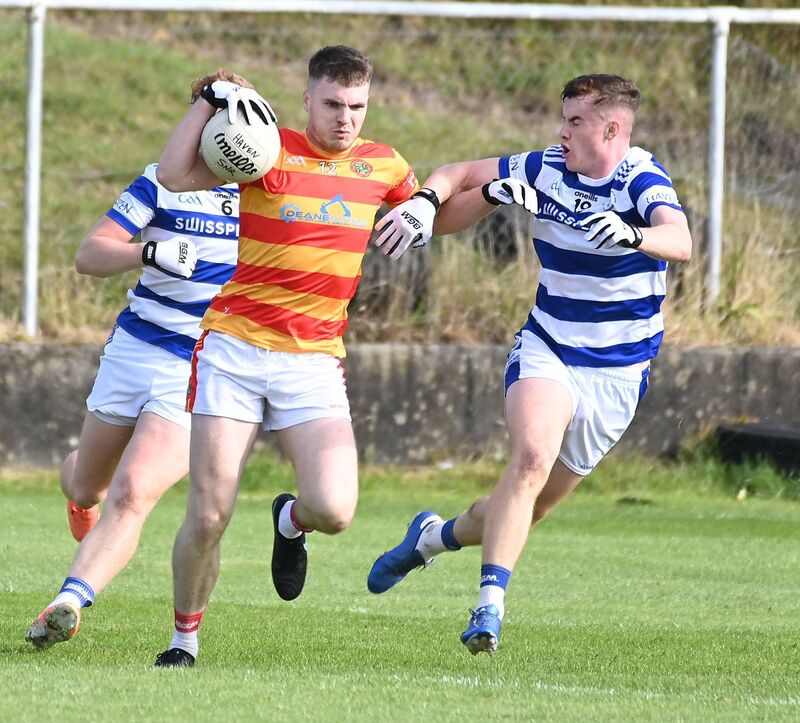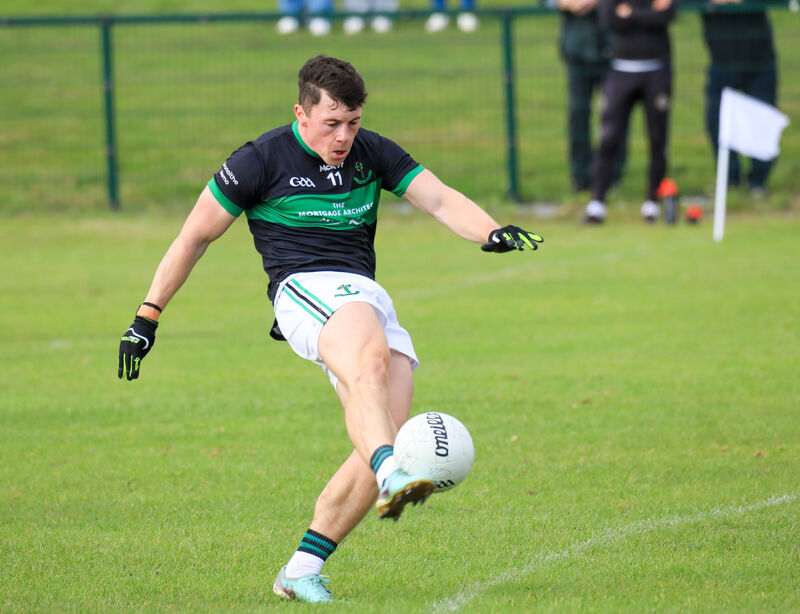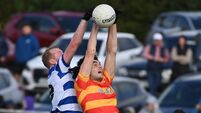Premier senior scoring rate up, even allowing for two-pointers

Steven Sherlock kicked four two-pointers for St Finbarr's against Carrigaline last Sunday. Picture: Denis Boyle
We have now had three rounds of the McCarthy Insurance Group Football Championships under the new rules that were introduced at the beginning of the year.
While they are still throwing up new phenomena, such as St Finbarr’s Steven Sherlock scoring a two-point sideline kick in Sunday’s win over Carrigaline, by and large the new order has been well-established in the minds of players and management teams. Quite why we still have more than a few ‘three up’ transgressions in such a landscape is another question, but it does perhaps go to show how it can be difficult to remember everything, especially in the high-intensity situations that championship football brings.
There can be little doubting that the inter-county season we witnessed was far more enjoyable than the years preceding, when massed defensive ranks made scores harder to come by.
Has the club game experienced a similar unclogging? The eye test shows us that there are still periods of sterile possession where teams are struggling to break down 11-man units, but equally there have been some superb two-pointers and a general sense that scorelines are bigger.
With the group stages of the county championships concluded, we can properly analyse some date – today, we will look at the top tier, the Premier SFC, and see how that measures up with the same periods in the five years since the new format was introduced.
In all, there were 55 orange flags. Twenty-five of these came in Group A, which featured Newcestown, Castlehaven, Mallow and Valley Rovers, David Buckley registering the most with six.

There were 19 in Group C (Nemo Rangers, Ballincollig, Douglas, St Michael’s), with nine of them in the Nemo-Michael’s match alone, in which Bryan Hayes had three for the Trabeg side and Luke O’Herlihy matched that for Michael’s. Nemo’s Mark Cronin had two in that game and two more against Douglas.
Group B, featuring St Finbarr’s, Carrigaline, Clonakilty and Carbery Rangers, had 11 two-pointers across its six matches, Sherlock getting four of them against Carrigaline on Sunday.
The 50 points accruing from those scores feed into a total of 569 points across the 18 matches, but of course, for a proper comparison of how many scores there have been, we should reduce that by the number of two-pointers, leaving us with 514.
That compares favourably with 456 total points in 2024, 467 in 2023 and 504 in 2022, but it lags behind the 538 of 2021 and the 536 of 2020.
The goal tallies show a similar story. There were 33 netted this year, well up on 26 last year and 27 in 2023, but in 2020 and 2022 there were 42 and 39 in 2021.

It should be noted, though, that high scoring alone does not equal entertainment or enjoyment and, while all but one of the qualification spots was sewn up before Sunday, just two of the 12 games up to then had winning margins of more than ten points.
The Newcestown-Carrigaline quarter-final pairing means that there will be one new entrant to the semi-finals in the group-stage era – since 2020, Ballincollig, Clonakilty, Douglas and Mallow have also made the last four alongside the ‘big three’ of Castlehaven, the Barrs and Nemo.
Clon, beaten by a point by Nemo in the quarter-finals in 2023 and then in a penalty shootout last year, were eliminated before their last match this year, as were Mallow.
Such narrow margins, as much as the new rules, serve to underline the overall competitiveness of the grade.










 App?
App?







